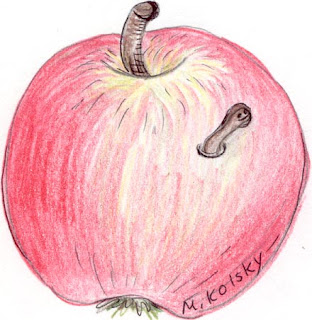It was a lovely Leaf it to Rusk week-end! I hope most of you took advantage of the wide variety of activities that were available and geared for young children.
On Saturday, our 2011 Mardi-Gras Queen, Shelly Makina provided the commentary for a one hour tour of Ladysmith. The Indianhead Transit tour looped around Ladysmith, going out to the County Park, the airport, the Wagon Wheel Hiking Trailhead and boat launch, through the Indeck pellet plant, the Copper Park Trail area, the library, and back to the Visitor Center.
The Art Harvest, sponsored by RAAA took place at Christy Mountain. Phyllis Stevenson, Jennifer Matlack, and I, provided a pumpkin painting and a pumpkin centerpiece art activity on the deck of the beautiful Christy Mountain Chalet while Ruth Meszaros provided an artist trading card activity. Rides on the chair lift and hikes down the mountain were another part of the beautiful day with beautiful art to browse and purchase inside.
I’d like to share my favorite memories of the Art Harvest with you. A little girl was creating a pumpkin centerpiece with collections of natural weeds, seeds, and flowers. She needed to cut the flower stem shorter and told her mom she needed the “squeezer cuts” to do this. Another family with three daughters spent a relaxing time painting and creating. All the girls were independent in their work and needed almost no guidance from their mother. This would not be surprising to hear of for the oldest daughter, who was probably in upper elementary or early middle school. And it was amazing to see the three-year-old painting for the longest time, very aware and careful of rinsing and drying her brush before choosing another color. But I will tell you, it knocked my socks off to watch her sister, who was not even two-years-old, manage with almost the same level of skill and definitely the same focus and concentration for over twenty minutes. They were all a delight. Thank you to the parents for bringing their wonderful children to the activity.
Over 60 pumpkin gourds were decorated on Saturday, I still have many left from my garden. Please take a walk along Highway 8 in front of Toad House and let your little one choose a mini pumpkin to decorate at home. The Toad will be happy that you did!
The seeds from milkweed pods were part of the collection of things participants could glue onto the pumpkin gourds. This week you can take a walk into a meadow and find almost-ripe milkweed pods with your young child. Here is a special fall fingerplay for the occasion.
In a milkweed cradle
Soft and warm
Baby seeds are hiding
Safe from harm
Open wide the cradle
Hold it up high
Come on wind
Help them fly!
Cup hands to show milkweed pod, peek into cupped hand to ‘see’ seeds. Open cupped hands, raise hands, and blow. Do this in the fall, showing children the milkweed pods. Save the empty pods to make lovely tree ornaments or bird feeders.



